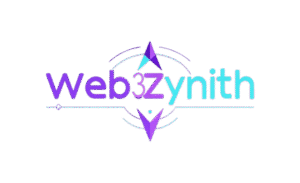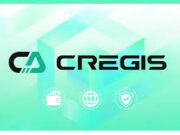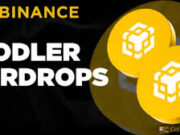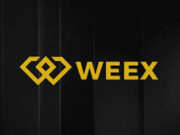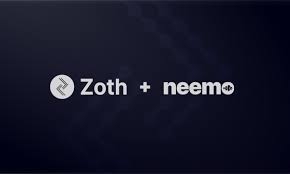If you’ve been riding the crypto waves with me over the past few years, then you already know how fast narratives can flip. One moment a protocol is scrambling through TVL hurdles and regulatory hurdles; the next, they’re absorbing talent and tech like a Black Friday flash sale. That’s precisely the energy behind Zoth’s acquisition of Neemo Finance — a powerful liquid staking protocol anchored in the Soneium ecosystem. Announced on September 28, 2025, this is not just a tuck-in: it’s Zoth flexing as the first full-stack StableFi OS, combining stablecoins, DeFi, and real-world assets (RWAs) into what feels like the next generation of on-chain finance. (GlobeNewswire)
I’ve tracked Zoth since they teased the $ZOTH launch in early 2024, when they were disrupting TradFi by tokenizing fixed-income assets like U.S. Treasuries for on-chain access. Today, they’re not just surviving — they’re scaling toward that $1B market cap goal, even after recovering from a painful $8.4M exploit earlier this year. The Neemo integration? It’s the rocket fuel. It injects liquid staking and vault mechanics into Zoth’s ZeUSD stablecoin strategy and gives them a fast path into Japan’s hyper-advanced blockchain ecosystem. As Zoth founder Pritam Dutta put it: “This is more than a strategic move; it’s a statement of intent.” (GlobeNewswire)
Let’s break it down.
Zoth Unpacked: The StableFi OS Bridging TradFi + DeFi
Before we dig into the deal, let’s level-set on who Zoth is and what they’re building. Founded in Singapore in early 2023 by Pritam Dutta and Koushik Bhargav, Zoth’s mission is clear: make real-world assets sexy, accessible, and composable on-chain.
In effect, Zoth positions itself as the first full-stack StableFi operating system, enabling institutions, DeFi protocols, and fintech builders to issue yield-bearing stablecoins backed by RWAs — without the usual cross-chain frictions. (GlobeNewswire)
Core components in Zoth’s stack include:
- FAAST (Fund as a Service for Tokenization): allows institutions to spin up compliant tokenized funds (custody, KYC, regulatory compliance) in a few weeks.
- PayX7: facilitates cross-border payment rails using stablecoin infrastructure.
- Stablecoin Studio: a modular minting tool for custom stables.
- ZeUSD: their flagship RWA-backed CDP (collateralized debt position) stable token, fully composable and designed to maintain peg while earning yield.
They’ve already raised over $6.5M and partnered with names like Haven1 (a $75M RWA push) and Bolts Capital ($15M commitment). (GlobeNewswire) Their current TVL is relatively modest (≈ $251K), but given that the RWA market already has ~$27B tokenized assets globally, the upside is enormous. (GlobeNewswire)
What sets Zoth apart is this: they’re creating a community-powered restaking layer for RWAs — bridging on-chain and off-chain yields, democratizing yields that were once cornered by TradFi gatekeepers. Rather than isolated stable tokens, everything becomes composable across chains — from Ethereum to L2s. But even kings need crowns — and that’s where Neemo fits in.
Meet Neemo: Japan’s Liquid Staking Ninja in the Soneium Ecosystem
If Zoth is the broadsword, Neemo Finance is the katana — precise, sharp, and deeply embedded in Japan’s blockchain ethos. Founded by Seiya Chida, Neemo has quietly carved out a leading liquid staking protocol position within Astar Network and the nascent Soneium ecosystem (a Sony-backed L2). (PANewsLab)
What Neemo does:
- Users stake ETH or ASTR and receive nrETH or nsASTR, maintaining liquidity while earning rewards.
- They accumulate Ether.fi points, Neemo loyalty incentives (up to ~20% APR), and additional Soneium DeFi rewards.
- They integrate with yield farms on Velodrome Finance, QuickSwap, and Kyo Finance for composability.
- Audited by Hacken, they remain non-custodial and multichain — bridging Astar to Soneium. (GlobeNewswire)
The result? Staked capital gets turned into a fluid asset you can redeploy in yield strategies across ecosystems — doing more with capital than just “locking” it.
Given Japan’s emerging regulatory clarity, plus Sony’s influence through Soneium, Neemo was already a gem. Now, it’s part of Zoth’s weaponry.
The Acquisition Breakdown: Synergies That Scream Moonshot
Announced against the neon backdrop of Tokyo (or Singapore, depending on your timezone), this acquisition is far from cosmetic. Zoth is acquiring Neemo’s team, tech, and infrastructure, integrating them deeply into Zoth’s product roadmap. (GlobeNewswire)
Why it makes sense:
- Neemo’s liquid staking / vault infrastructure supercharges ZeUSD — making its yield strategies scalable, capital efficient, and composable.
- Liquid restaking enables vaults that auto-compound RWA collateral for higher yields — all without locking capital in illiquid positions.
- It gives Zoth an instant gateway to Japan’s blockchain market, leveraging Soneium’s Sony-backed infrastructure and institutional credibility.
- The Neemo team is joining Zoth’s Product & Dev arm, accelerating roadmap execution. (GlobeNewswire)
As Aly Madhavji of Blockchain Founders Fund put it: “This gives Zoth access to real staking infrastructure … transforming StableFi from a concept into something institutions can actually use.” (GlobeNewswire) And Takashi Hayashida from Taisu Ventures remarked: “It meaningfully expands Zoth’s ecosystem … positioning them to play a larger role in StableFi.” (GlobeNewswire)
While terms remain undisclosed, whispers suggest a cash + stock deal aligning with Zoth’s upcoming token generation event (TGE).
Tech Fusion: How Liquid Staking Elevates Zoth’s Stablecoin Architecture
Let’s get into the spicy part: the tech. By bringing in Neemo’s liquid restaking, Zoth can transform the way ZeUSD behaves.
- Restaking ZeUSD collateral: Mint ZeUSD against RWAs, then stake via Neemo to capture yield while retaining liquidity.
- Vault composability: Users can funnel ZeUSD into vaults that dynamically mix RWA exposure + staking tokens for diversified yield.
- FAAST integration: Institutions using FAAST can now layer Neemo-powered yield into their tokenized products out of the box.
- Resilience and decentralization: Reduces single points of failure; staking is distributed; liquidity remains open.
In short: stable, yieldy, composable — StableFi on steroids.
Strategic Landscape: Asia, Institutions, and the Next Frontier
Japan isn’t just a market — it’s a battleground. With $10B+ in tokenized assets projected by 2026 and innovation-friendly regulation, it’s prime real estate for StableFi. Neemo grants Zoth instant legitimacy in Japan through Soneium’s Sony-backed ecosystem. (GlobeNewswire)
Expect pilots with Japanese fintechs, institutional bond issuers, and top-tier funds. The team synergy from Chida’s APAC experience will accelerate Japanese product launches and integration of yen-stable rails in PayX7.
Beyond Japan, this plays into Zoth’s broader Asia strategy — connecting Singapore, Hong Kong, and Japanese hubs — and aligns tightly with their RWA bridge with Haven1. (GlobeNewswire)
Challenges remain — regulatory harmonization, oracle security, and integration risks — but Zoth’s modular architecture and auditable stack are strong mitigants.
Roadmap Forecast: What’s Next After the Deal
Short term (Q4 2025):
- TGE for $ZOTH, with Neemo-powered staking baked into ZeUSD.
- Vault launches on Soneium and cross-chain restaking pilots.
- Marketing push in Japan, APAC, and institutional outreach.
Medium term:
- Fintech + institutional onboarding — tokenizing fixed-income products + yield stacking via Neemo.
- Expansion of PayX7 rails into yen + Japanese stable pairs.
- Deeper ecosystem integrations across Ethereum, L2s, and Soneium.
Long term:
- StableFi dominance across major regions.
- Bridging trillions of TradFi capital on-chain.
- Becoming the de facto OS for Yield + Stability in crypto.
The community’s already fired up. The announcement on X (formerly Twitter) reached broad engagement. (X (formerly Twitter)) While some whisper of airdrops or “points farming,” the real excitement lies in the tech and institutional scale.
Voices from the Trenches
- Seiya Chida (Neemo): “A definitive turning point.” (GlobeNewswire)
- Aly Madhavji: “More stable yield for users.” (GlobeNewswire)
- Takashi Hayashida: “Larger role in StableFi.” (GlobeNewswire)
- On X, various quant and protocol voices flagged bullish sentiment: “A protocol to watch.”
- On LinkedIn, Dutta flagged: “Acquisition strengthens stablecoin ecosystem and global adoption.” (LinkedIn)
This isn’t merely a merger — it’s ecosystem chess.
Moonshot or Mirage?
Here’s the naked truth: StableFi is the next meta. Zoth’s acquisition of Neemo doesn’t just move the needle — it resets the coordinate system. From tokenized treasuries to restaked stable assets, Zoth is building on-ramps for both institutions and retail.
I’m leaning moonshot. Japan alone could be a 10× multiplier in adoption. But as always: DYOR — crypto’s volatile, and even the sharpest strategies can stumble.
What’s your take? Moon or mirage? Drop your thoughts below.
🔗 Useful Links & References
- Zoth press release (Acquisition of Neemo Finance) (GlobeNewswire)
- PANews coverage of the acquisition (PANewsLab)
- Soneium blockchain overview (Sony’s L2 initiative) (soneium.org)
- Soneium testnet stats: 14M accounts, 47M txns (The Pickool)
- Sony’s push into blockchain and regulatory context in Japan (UNLOCK Blockchain)
